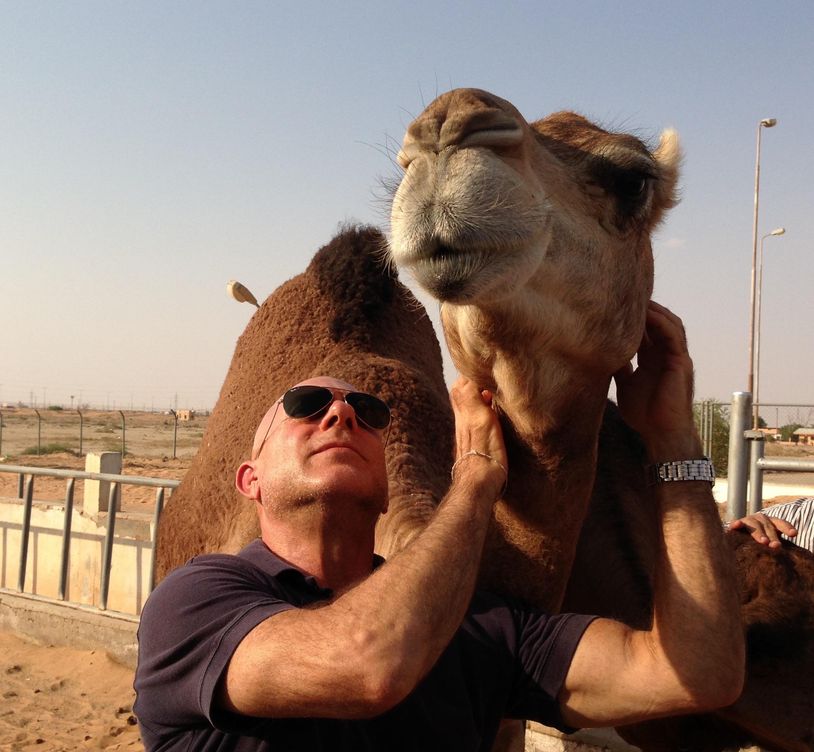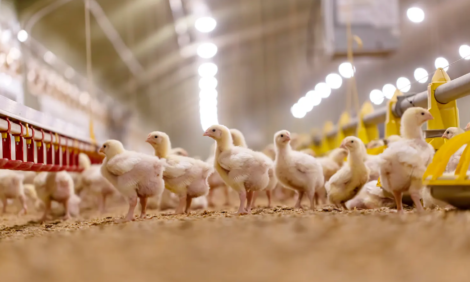



Why we don’t have more COVID-19 vaccines for animals
COVID-19 vaccines for humans number 30, while only three vaccines are available for animals, even though many species have been infected.Editor's note: This article originally appeared in Leaps.org and was written by Puja Changoiwala.
Responding to COVID-19 outbreaks at more than 200 mink farms, the Danish government, in November 2020, culled its entire mink population. The Danish armed forces helped farmers slaughter each of their 17 million minks, which are normally farmed for their valuable fur.
The SARS-CoV-2 virus, said officials, spread from human handlers to the small, ferret-like animals, mutated, and then spread back to several hundred humans. Although the mass extermination faced much criticism, Denmark’s prime minister defended the decision last month, stating that the step was “necessary” and that the Danish government had “a responsibility for the health of the entire world.”
Over the past two and half years, COVID-19 infections have been reported in numerous animal species around the world. In addition to the Danish minks, there is other evidence that the virus can mutate as it’s transmitted back and forth between humans and animals, which increases the risk to public health. According to the World Health Organisation (WHO), COVID-19 vaccines for animals may protect the infected species and prevent the transmission of viral mutations. However, the development of such vaccines has been slow. Scientists attribute the deficiency to a lack of data.
“Several animal species have been predicted and found to be susceptible to SARS-CoV-2,” says Suresh V. Kuchipudi, interim director of the Animal Diagnostic Laboratory at the Huck Institutes of Life Sciences. But the risk remains unknown for many animals in several parts of the world, he says. “Therefore, there is an urgent need to monitor the SARS-CoV-2 exposure of high-risk animals in different parts of the world.”
In June, India introduced Ancovax, its first COVID-19 vaccine for animals. The development came a year after the nation reported that the virus had infected eight Asiatic lions, with two of them dying. While 30 COVID-19 vaccines for humans have been approved for general or emergency use across the world, Ancovax is only the third such vaccine for animals. The first, named Carnivac-Cov, was registered by Russia in March last year, followed by another vaccine four months later, developed by Zoetis, a U.S. pharmaceutical company.
Christina Lood, a Zoetis spokesperson, says the company has donated over 26,000 doses of its animal vaccine to over 200 zoos – in addition to 20 conservatories, sanctuaries and other animal organizations located in over a dozen countries, including Canada, Chile and the U.S. The vaccine, she adds, has been administered to more than 300 mammalian species so far.
“At least 75 percent of emerging infectious diseases have an animal origin, including COVID-19,” says Lood. “Now more than ever before, we can all see the important connection between animal health and human health."
The dangers of COVID-19 infections among animals
Cases of the virus in animals have been reported in several countries across the world. As of March this year, 29 kinds of animals have been infected. These include pet animals like dogs, cats, ferrets and hamsters; farmed animals like minks; wild animals like the white-tailed deer, mule deer and black-tailed marmoset; and animals in zoos and sanctuaries, including hyenas, hippopotamuses and manatees. Despite the widespread infection, the U.S. Centres for Diseases Control and Prevention (CDC) has noted that “we don’t yet know all of the animals that can get infected,” adding that more studies and surveillance are needed to understand how the virus is spread between humans and animals.
Leyi Wang, a veterinary virologist at the Veterinary Diagnostic Laboratory, University of Illinois, says that captive and pet animals most often get infected by humans. It goes both ways, he says, citing a recent study in Hong Kong that found the virus spread from pet hamsters to people.
Wang’s bigger concern is the possibility that humans or domestic animals could transmit the virus back to wildlife, creating an uncontrollable reservoir of the disease, especially given the difficulty of vaccinating non-captive wild animals. Such spillbacks have happened previously with diseases such as plague, yellow-fever, and rabies.
In the past, other human respiratory viruses have proven fatal for endangered great apes like chimpanzees and gorillas. Fearing that COVID-19 could have the same effect, primatologists have been working to protect primates throughout the pandemic. Meanwhile, virus reservoirs have already been created among other animals, Wang says.
“Deer of over 20 U.S. states were tested SARS-CoV-2 positive,” says Wang, pointing to a study that confirmed human-to-deer transmission as well as deer-to-deer transmission. It remains unclear how many wildlife species may be susceptible to the disease due to interaction with infected deer, says Wang.
In April, the CDC expressed concerns over new coronavirus variants mutating in wildlife, urging health authorities to monitor the spread of the contagion in animals as threats to humans. The WHO has made similar recommendations.
Challenges to vaccine development
Zoetis initiated development activities for its COVID-19 vaccine in February 2020 when the first known infection of a dog occurred in Hong Kong. The pharmaceutical giant completed the initial development work and studies on dogs and cats, and shared their findings at the World One Health Congress in the fall of 2020. A few months later, after a troop of eight gorillas contracted the virus at the San Diego Zoo Safari Park, Zoetis donated its experimental vaccine for emergency use in the great ape population.
Zoetis has uniquely formulated its COVID-19 vaccine for animals. It uses the same antigen as human vaccines, but it includes a different type of carrier protein for inducing a strong immune response. “The unique combination of antigen and carrier ensures safety and efficacy for the species in which a vaccine is used,” says Lood.
But it’s challenging and expensive to develop and implement animal vaccines, and demand has been lacking as the broader health risk for animals isn’t well known among the public. People tend to think only about their house pets.
“As it became apparent that risk of severe disease for household pets such as cats and dogs was low, demand for those vaccines decreased before they became commercially available,” says William Karesh, executive vice-president for health and policy at EcoHealth Alliance. He adds that in affected commercial mink farms, the utility of a vaccine could justify the cost in some cases.
Although scientists have made tremendous advances in making vaccines for animals, Kuchipudi thinks that the need for COVID-19 vaccines for animals “must be evaluated based on many factors, including the susceptibility of the particular animal species, health implications, and cost.”.
Not every scientist feels the need for animal vaccines. Joel Baines, a professor of virology at Cornell University’s Baker Institute for Animal Health, says that while domestic cats are the most susceptible to COVID-19, they usually suffer mild infections. Big cats in zoos are vulnerable, but they can be isolated or distanced from humans. He says that mink farms are a relatively small industry and, by ensuring that human handlers are COVID negative, such outbreaks can be curtailed.
Baines also suggests that human vaccines could probably work in animals, as they were tested in animals during early clinical trials and induced immune responses. “However, these vaccines should be used in humans as a priority and it would be unethical to use a vaccine meant for humans to vaccinate an animal if vaccine doses are at all limiting,” he says.

In the absence of enough vaccines, Karesh says that the best way to protect animals is the same as protecting unvaccinated humans - reduce their exposure to infected people by isolating them when necessary. “People working with or spending time with wild animals should follow available guidelines, which includes testing themselves and wearing PPE to avoid accidentally infecting wildlife,” he says.
The Link between Animal and Human Health
Although there is a need for animal vaccines in response to virus outbreaks, the best approach is to try to prevent the outbreaks in the first place, explains K. Srinath Reddy, president of the Public Health Foundation of India. He says that the incidence of zoonotic diseases has increased in the past six decades because human actions like increased deforestation, wildlife trade and animal meat consumption have opened an ecological window for disease transmission between humans and animals. Such actions chip away at the natural barriers between humans and forest-dwelling viruses, while building conveyor belts for the transmission of zoonotic diseases like COVID-19.
Many studies suggest that the source of COVID-19 was infected live animals sold at a wet market in China’s Wuhan. The market sold live dogs, rats, porcupines, badgers, hares, foxes, hedgehogs, marmots and Chinese muntjac (small deer) and, according to a study published in July, the virus was found on the market’s stalls, animal cages, carts and water drains.
This research strongly suggests that COVID-19 is a zoonotic disease, one that jumps from animals to humans due to our close relationship with them in agriculture, as companions and in the natural environment. Half of the infectious diseases that affect people come from animals, but the study of zoonotic diseases has been historically underfunded, even as they can reduce the likelihood and cost of future pandemics.
“We need to invest in vaccines,” says Reddy, “but that cannot be a substitute for an ecologically sensible approach to curtailing zoonotic diseases.”








